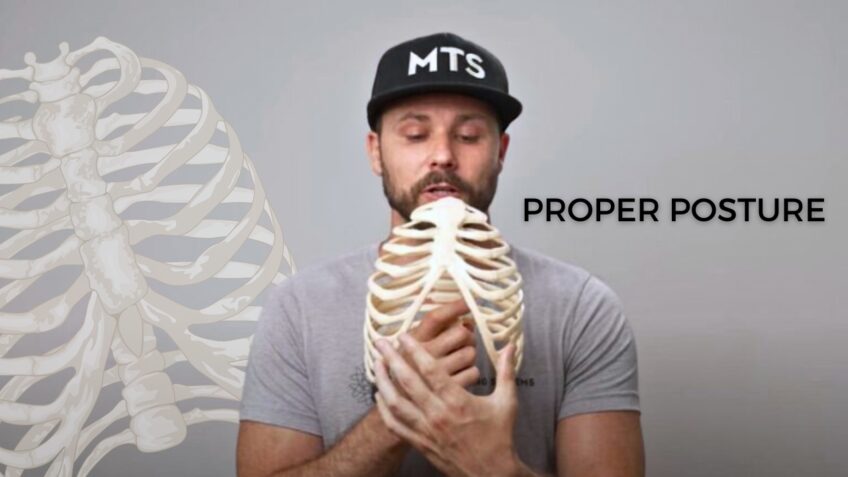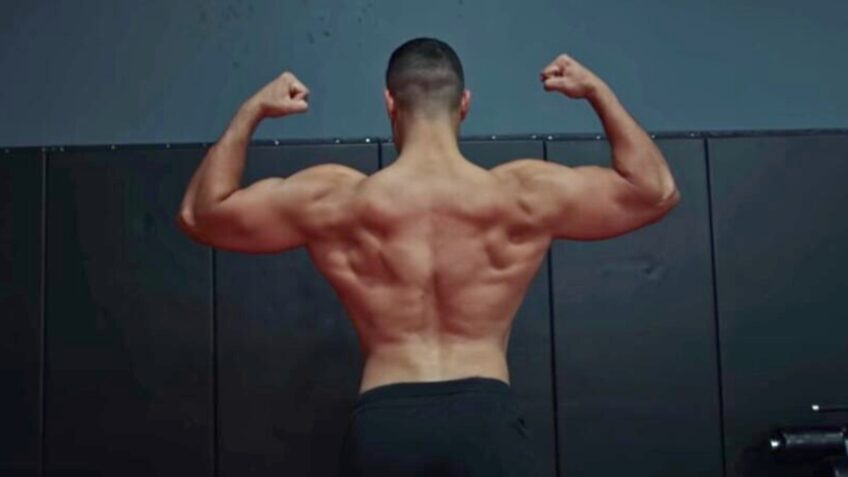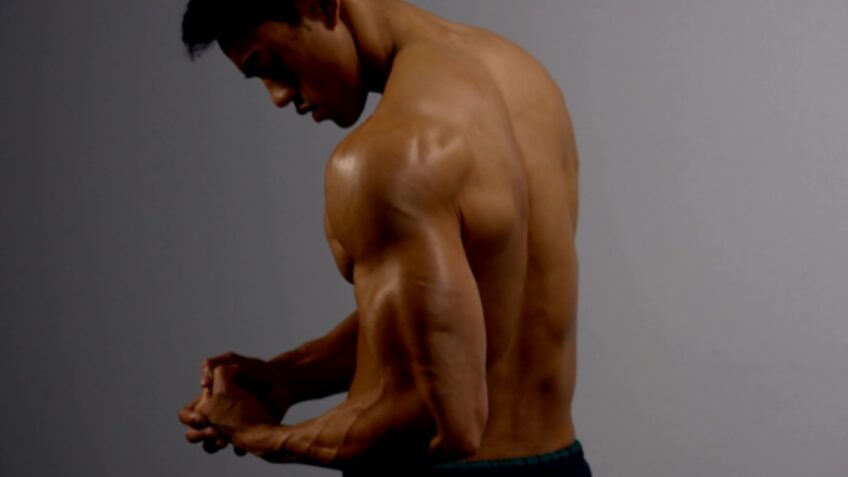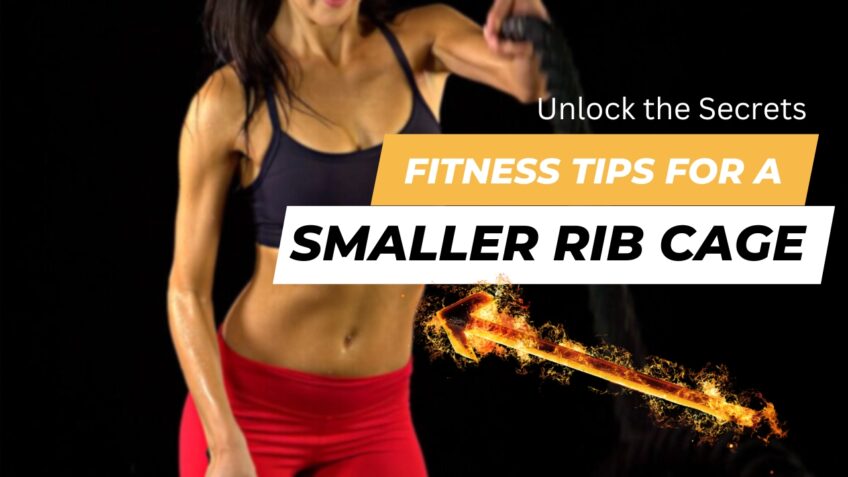Aiming for a balanced physique is a common goal among fitness enthusiasts and casual exercisers alike. However, it’s crucial to debunk some misconceptions before we begin this journey. Particularly, the notion of altering one’s rib cage size needs to be addressed.
The reality is, our rib cage, like many parts of our anatomy, is determined largely by our genetic makeup. And while we can’t physically shrink our rib cage, we can employ strategies that may make it appear smaller or more proportional. It’s all about setting and managing realistic expectations, which we hope this article will help you do.
Understanding the Rib Cage
Your rib cage plays a crucial role in protecting vital organs like your heart and lungs. It’s composed of 24 curved ribs, the sternum, and the thoracic vertebrae. The size and shape of your rib cage are influenced by several factors, including genetics, age, and overall body composition.
Genetics play a key role in determining your rib cage’s size, much like they determine your height or shoe size. Your ribs might be broader or narrower based on your genetic predisposition. While this can’t be altered, understanding it can help you adjust your fitness goals accordingly and work towards a physique that is healthiest and most natural for your body type.
Promoting a Lean Body Composition

Eating a balanced diet plays a crucial role in achieving a leaner body composition. Aim to incorporate nutrient-dense foods that are high in protein, fiber, and healthy fats into your diet. These can help promote feelings of fullness, fuel your workouts, and nourish your body.
A key strategy in fat loss is creating a caloric deficit, meaning you burn more calories than you consume. This can be achieved through a combination of a healthy diet and regular exercise.
Another popular strategy is intermittent fasting, which involves cycling between periods of eating and fasting. This method can not only help create a calorie deficit but also has been linked to other health benefits like improved insulin sensitivity.
Reducing your sodium intake can also contribute to a leaner look. Excessive sodium can lead to water retention, which can cause bloating and a puffier appearance. Swapping processed foods with fresh fruits, vegetables, and lean proteins can help reduce sodium intake.
When it comes to exercise, a combination of cardiovascular workouts and strength training can work wonders. Cardio exercises help burn calories and reduce overall body fat, while strength training can enhance muscle tone and definition. Core exercises, in particular, can help strengthen the midsection, leading to a more toned and tight appearance around the rib cage.
Enhancing Posture and Alignment

Maintaining proper posture is vital. It helps reduce strain on your muscles and ligaments, prevents back and muscular pain, and can make your rib cage appear smaller. When you slump or slouch, your rib cage can seem more pronounced. Standing tall with your shoulders back and down can make a noticeable difference.
Exercises and stretches can significantly improve posture. Upper back exercises, such as rows and reverse flys, strengthen the muscles that support good posture. Core exercises, including planks and bridges, help maintain a strong midsection, further improving posture. Practices like yoga and Pilates can enhance overall body awareness and alignment.
Emphasizing Waistline Definition
In fitness, illusions can be as good as reality. By emphasizing waistline definition, you can create the appearance of a smaller rib cage. Targeted exercises for the obliques and waist, such as side planks, can help. Incorporate exercises like side bends and twists into your fitness routine.
Resistance training and progressive overload, which involves gradually increasing the weight, frequency, or number of repetitions in your strength training workouts, can also enhance waistline definition. Over time, these efforts can sculpt your waist and give the illusion of a smaller rib cage.
Optimizing Breathing Techniques

Breathing plays an integral role in shaping the appearance of your rib cage. When you breathe shallowly, your rib cage can appear more prominent due to the lack of movement in your diaphragm and intercostal muscles.
By learning techniques that maximize lung capacity and engage the diaphragm, such as diaphragmatic breathing, you can promote better muscle tone around the rib cage. Incorporating mindful breathing exercises into your daily routine can also help you maintain these breathing habits. Not only can these techniques improve the appearance of your rib cage, but they can also contribute to better overall health.
Acceptance and Body Positivity
While working towards our fitness goals, it’s essential to maintain a positive attitude towards our bodies. This includes embracing and loving your unique body shape. Remember, diversity is the spice of life, and bodies are no exception.
A critical aspect of this journey is focusing on overall health and well-being rather than purely aesthetic goals. Celebrate every little progress you make, regardless of whether it directly affects your rib cage size or not. The most important thing is that you’re becoming healthier and stronger.
Gender Differences in Rib Cage Size
Physiological differences exist between male and female rib cages. Men tend to have broader rib cages and larger frames due to higher testosterone levels, which can lead to more pronounced muscular development.
Women, on the other hand, generally have smaller and narrower rib cages. These variations, mostly due to hormonal influences, are entirely normal. It’s important to appreciate these natural differences and focus on embracing our individual body types.
One size does not fit all when it comes to fitness and body composition.
Building a Strong and Toned Upper Body

Building a strong and toned upper body can help create a balanced appearance that might make the rib cage seem smaller. Incorporate exercises such as push-ups, pull-ups, and overhead presses into your routine for a toned chest and arms.
For men, chest exercises such as bench presses can help build a broad and muscular chest, which can balance out a larger rib cage.
For women, exercises like dumbbell rows and bicep curls can help tone the arms and back without adding bulk, promoting a balanced figure.
It’s also essential to strengthen the back muscles for improved posture and a more streamlined appearance. Moreover, balancing upper body workouts with lower body exercises can contribute to overall body symmetry.
Enhancing Overall Body Symmetry

Creating the illusion of a smaller rib cage is as much about symmetry as it is about size. By building and toning your lower body, you can balance out a larger upper body, contributing to a more proportional physique. Include exercises like squats, lunges, and deadlifts in your routine to target your lower body.
These workouts not only help balance your physique but also strengthen your muscles, improve your balance, and boost your metabolism.
Conclusion
While it’s important to set fitness goals, it’s equally important to keep these goals realistic. You cannot change the fundamental structure of your rib cage, but you can influence how it appears by maintaining a lean body composition, improving your posture, and building a balanced physique.
We hope this guide has given you useful strategies for creating the illusion of a smaller rib cage and has inspired you to adopt a holistic approach to fitness. Remember to prioritize self-care and self-acceptance in your journey towards health and wellness. Every body is different, and every body is beautiful.

